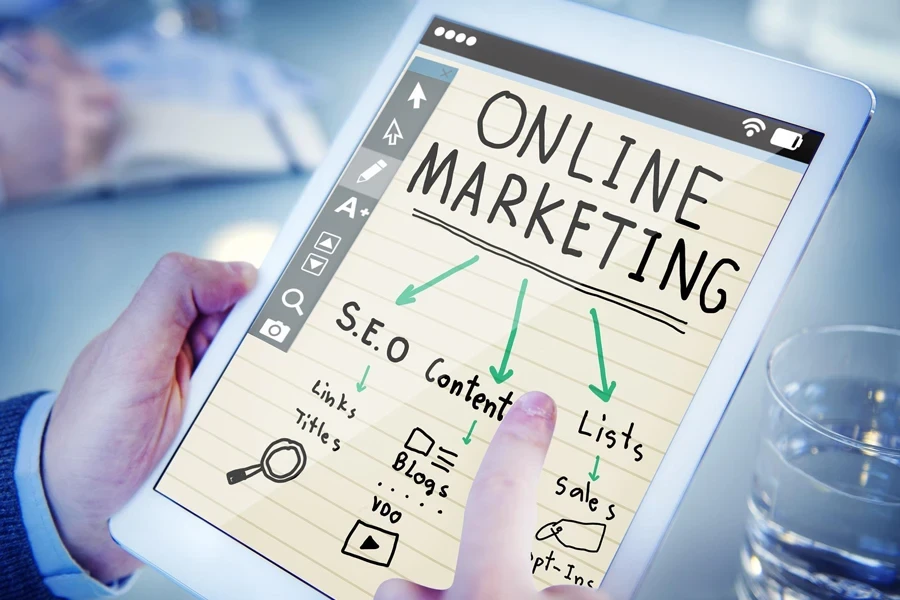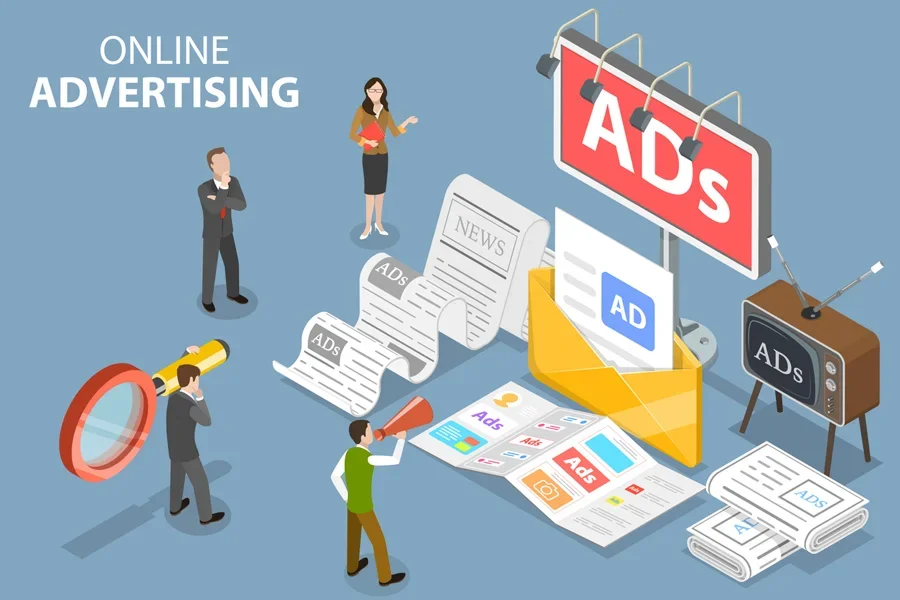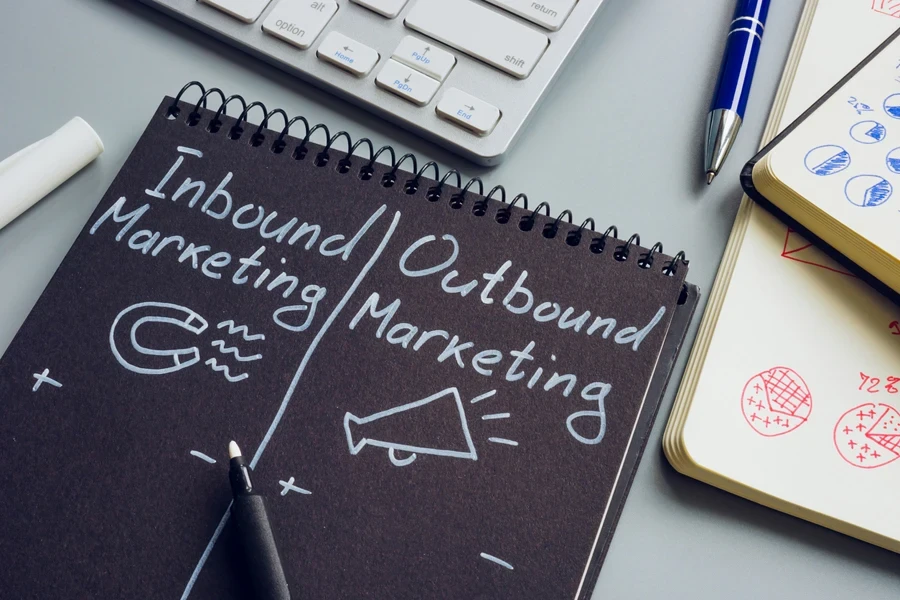Outbound and inbound marketing are great marketing methods, each with their own advantages. While inbound marketing attracts clients by concentrating on producing quality content, it’s usually more cost-effective and is primarily online. Outbound marketing seeks to reach a wider audience through targeted advertisements, which can be used online and offline.
As a marketer, you aim to generate quality leads and influence customers to purchase. Both inbound and outbound marketing can be used on multiple platforms. Understanding these approaches will empower you to select the most effective one for your intended audience.
Table of Contents
Understanding inbound marketing
Understanding outbound marketing
Inbound vs. outbound marketing
Conclusion
Understanding inbound marketing

Unlike traditional marketing, inbound marketing provides useful information to clients to draw them to a business naturally. This strategy builds credibility through blog writing, social media activities, and other materials produced. The adaptability of inbound marketing makes it a reassuring and flexible strategy.
User profiles, content mapping, and lead nurturing are not exceptions but rules, at least if we consider B2B marketing. Inbound marketing creates a long-term bond with the customers since it helps them with useful information and solves their issues.
Forms of inbound marketing
- Blogs: A business that writes insightful blog posts, white papers, product reviews, etc., to show its subject matter expertise and attract new customers.
- SEO: This tool is used to understand Google Analytics and use keywords to rank high. SEO is used to help websites appear on Google’s search results and attract more visitors to their websites.
- Social media: Social media is a way of connecting and interacting with diverse audiences. It uses media like Facebook, Instagram, LinkedIn, TikTok, and X to reach the audience.
- Lead magnet: This is usually in the form of an e-book or whitepaper that contains relevant information on a product or service. It is a free downloadable PDF file on the website and offers useful information to interested readers.
Advantages and disadvantages of inbound marketing

Advantages:
1. Cost-effective: Inbound marketing comes with a lower budget because it’s about attracting an audience naturally (e.g., via blogs, SEO, social media).
2. Builds trust and loyalty: Inbound marketing offers valuable, relevant content that helps build stronger, long-term customer relationships.
3. Better targeting: The likelihood of reaching people who already want your product or service increases engagement rates and conversion potential.
Disadvantages:
1. Takes time: The outcome from inbound marketing could be more prompt. It also takes months of posting on the sites and sharing the business to create awareness, generate traffic, and gain credibility.
2. Requires quality content: Content creation is crucial and time-consuming, especially for small businesses that may need to find a way to hire professional content marketers.
3. Competitive saturation: Inbound marketing is saturated, and you must strategically position your business. You should define unique selling propositions in highly competitive markets, which can become difficult.
Understanding outbound marketing

Direct communication to reach a wider audience through advertising, such as television ads, radio, emails, and cold calling, is known as outbound marketing or “traditional marketing.” It’s proactive and an approach to get attention as quickly as possible.
Outbound marketing is a broad reach but can be annoying to an audience (especially if it’s interrupting their experience). Outbound strategies are better for businesses that need quick brand awareness or product exposure.
Forms of outbound marketing
- An email campaign in which a business sends many emails to a list of potential clients they are targeting.
- To catch their attention, a commercial is shown to viewers during a popular television show.
- A telemarketing campaign involves a business calling a list of prospective clients to sell them goods or services.
- An organization that prints flyers about their product or service and places them in local letterboxes.
Advantages and disadvantages of outbound marketing

Advantages:
1. Immediate results: Outbound strategies, such as paid Ads, deliver immediate awareness and lead conversion, making them effective for campaigns with deadlines.
2. Reaches a broader audience: Outbound marketing has the advantage of targeting a large audience, including the ‘interrupt’ audience, which is an audience that does not necessarily seek out the product.
3. Control over targeting: Outbound marketing is very selective because you can choose a wide range of media to pass your message across, making it easier to target a certain group.
Disadvantages:
1. Expensive: Overall, outbound marketing is usually costly, especially for advertisements, print and television media.
2. Can be intrusive: Most targeted individuals consider outbound tactics, such as calls without prior consent or advertisements that suddenly appear on websites that the individual visits, as invasive and, therefore, develop a perception of the brand as invasive in their privacy.
3. Lower engagement: Outbound marketing campaigns are generally less effective and have lower engagement than inbound marketing ones since the audiences are not interested in the product or service.
Inbound vs. outbound marketing

Inbound marketing aims to raise brand recognition through social media strategies and content creation so that people become aware of you, visit your website for more details, express interest in your goods, and eventually buy from you.
According to the Aberdeen Group survey, 49% of sales teams fail to meet their quotas, while 64% of selling teams who use inbound social selling achieve their goals. Inbound tactics enable you to interact with your target audience so you can more quickly qualify as a lead prospect.
In contrast, other outbound strategies require much time and effort and cannot produce leads with the same efficiency or precision. Outbound methods often involve reaching out to a broad, sometimes unqualified audience, resulting in lower engagement rates and a higher cost per lead.
Key differences

Inbound marketing draws customers in by addressing their needs and creating content they seek out. In contrast, outbound marketing pushes messages to reach customers directly, often without considering their immediate interest in the product or service.
1. Approach and target audience
Inbound targets interested people who already follow similar content, while outbound is for a much larger audience without prior knowledge about the company.
2. Methods and strategies
Blogs, SEO, social media, and video marketing are used by inbound to engage customers. Outbound depends on ads, direct mail, and telemarketing.
3. Cost and return on investment
While inbound usually has a more expensive lead cost per lead, the results tend to come later. Outbound marketing is more costly, but it targets faster results.
4. Engagement and interaction with customers
Inbound marketing is two-way and, therefore, invites engagement and response. Outbound is just one way, which is sending messages to the audience.
Conclusion
Inbound marketing is ideal for building long-term customer relationships by providing valuable content and establishing your brand as a trusted resource. On the other hand, outbound marketing effectively increases brand awareness and reaches a broader audience.
Depending on your target market, budget, and business objectives, you may use inbound, outbound, or a combination of these strategies. Understanding these approaches can help you create a well-rounded and measurable marketing strategy. Take that first step forward and build a strategy your audience can relate to; and don’t forget to visit Alibaba.com for more tips.



